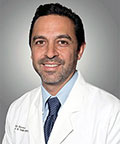- Home
- Foot & Ankle Conditions
- Pediatric Conditions
- Calcaneal Apophysitis
Calcaneal Apophysitis (Sever's Disease): causes, symptoms and treatments
- Published 6/1/2018
- Last Reviewed 1/3/2024

What is Sever's disease (calcaneal apophysitis)?
Calcaneal apophysitis (more commonly called Sever's disease) is a foot condition that predominantly affects children, especially those who are active in sports. In fact, Sever's disease is the most common cause of heel pain in young athletes.
It commonly presents as unexplained heel pain that isn't the result of trauma. Because many things can cause heel pain, it’s important to consult with a trained pediatric podiatrist to find the root of your child’s heel pain. While it could just be overuse or strain, it could also be Sever’s disease.
- What causes Sever's disease?
- What are the symptoms of calcaneal apophysitis?
- What are some risk factors for Sever’s disease?
- Diagnosing Sever's disease
- What is calcaneal apophysitis treatment?
- Recovering from Sever's disease
- UFAI is here to help with pediatric foot and ankle conditions
- Sever's disease FAQs
- Can you play sports with Sever's disease?
- Can adults get Sever's disease?
- Can Sever's disease cause knee pain?
- Can Sever's disease cause permanent damage?
- Does Sever's disease stunt growth?
- How long does Sever's disease usually last?
- Is plantar fasciitis the same as Sever's disease?
- Is Sever's disease hereditary?
-
ABFAS® Board Certified in Foot Surgery and Reconstructive Rearfoot and Ankle Surgery. and Director of University Foot and Ankle Institute
Dr. Bob Baravarian DPM, FACFAS is a Board-Certified Podiatric Foot and Ankle Specialist. He is an assistant clinical professor at the UCLA School of Medicine and serves as Director of University Foot and Ankle Institute.
Dr. Baravarian has been involved in athletics his entire life and played competitive tennis in high school and college. He has an interest in sports medicine, arthritis therapy, and trauma/reconstructive surgery of the foot and ankle. He is also fluent in five languages (English, French, Spanish, Farsi, and Hebrew),
-
ABFAS® Board Certified in Foot Surgery and Reconstructive Rearfoot and Ankle Surgery. and Director of University Foot and Ankle Institute
Dr. Bob Baravarian DPM, FACFAS is a Board-Certified Podiatric Foot and Ankle Specialist. He is an assistant clinical professor at the UCLA School of Medicine and serves as Director of University Foot and Ankle Institute.
Dr. Baravarian has been involved in athletics his entire life and played competitive tennis in high school and college. He has an interest in sports medicine, arthritis therapy, and trauma/reconstructive surgery of the foot and ankle. He is also fluent in five languages (English, French, Spanish, Farsi, and Hebrew),
 Excellent Service. Professional Demeanor. Short Waiting Room Times. Lovely Reception Personnel. Will cure what ails you.Shelly H.
Excellent Service. Professional Demeanor. Short Waiting Room Times. Lovely Reception Personnel. Will cure what ails you.Shelly H. I liked it.Liisa L.
I liked it.Liisa L. I depend on the doctors at UFAI to provide cutting edge treatments. Twice, I have traveled from Tucson, Arizona to get the car...Jean S.
I depend on the doctors at UFAI to provide cutting edge treatments. Twice, I have traveled from Tucson, Arizona to get the car...Jean S. They helped me in an emergency situation. Will go in for consultation with a Dr H????
They helped me in an emergency situation. Will go in for consultation with a Dr H????
Re foot durgeryYvonne S. It went very smoothly.Maria S.
It went very smoothly.Maria S. My experience at the clinic was wonderful. Everybody was super nice and basically on time. Love Dr. Bavarian and also love the ...Lynn B.
My experience at the clinic was wonderful. Everybody was super nice and basically on time. Love Dr. Bavarian and also love the ...Lynn B. I fill I got the best service there is thank youJames G.
I fill I got the best service there is thank youJames G. My experience with your practice far exceeded any of my expectations! The staff was always friendly, positive and informative. ...Christy M.
My experience with your practice far exceeded any of my expectations! The staff was always friendly, positive and informative. ...Christy M. So far so good- Friendly staff that listens to my concerns. Great Doctor, and all around a good experience. Worth the travel in...Tony P.
So far so good- Friendly staff that listens to my concerns. Great Doctor, and all around a good experience. Worth the travel in...Tony P. Friendly staff. Very knowledgeable. Dr. Bob is great!Stacey M.
Friendly staff. Very knowledgeable. Dr. Bob is great!Stacey M. Love Dr. Johnson.Emily C.
Love Dr. Johnson.Emily C. I am a new patient and felt very comfortable from the moment I arrived to the end of my visit/appointment.Timothy L.
I am a new patient and felt very comfortable from the moment I arrived to the end of my visit/appointment.Timothy L.
